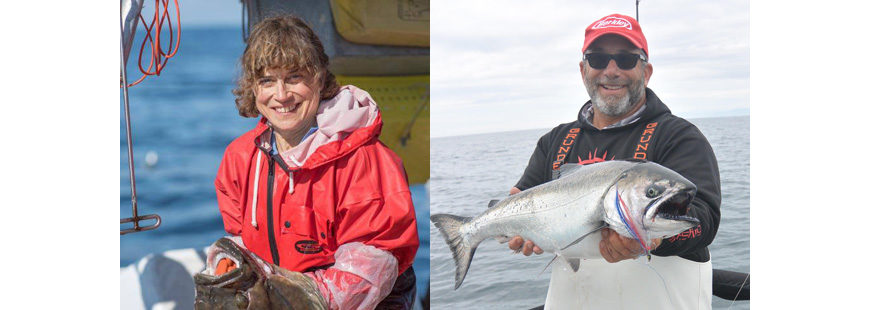By Linda Behnken & Andy Mezirow
This post appeared in Pacific Fishing in December, 2017 and is reprinted with permission
We met more than 20 years ago, each of us fighting like hell for our sector of Alaska’s halibut fishery: Andy, a fierce advocate for the guided sport sector, and Linda, a relentless voice for small-boat commercial fishermen.
Although we still argue about how to share the fish, we never disagree about taking care of the fish and the resource on which our fisheries depend. We know first-hand that stock assessments and science-based catch limits are fundamental to protecting fisheries for the long-term. Without these management tools and regulations, our livelihoods would be lost.
Today, we hear some recreational fishermen demanding “increased flexibility” to “modernize” fisheries management. We support tailoring management strategies to meet the needs of fishermen and fishing communities. The kind of “flexibility” being suggested today, however, embraces the notion that we should increase fishing effort on fisheries that lack current data. Catching more fish than the best available science indicates is a sure recipe for overfishing.
Without question, this would be a giant step backwards for fish, fishermen and the marine resource.
The Magnuson-Stevens Fishery Conservation and Management Act already allows management flexibility within the law. Alaska’s halibut fishery, which supports subsistence, sport, guided sport, and commercial fisheries, provides a great example. Each sector is managed differently, with strategies tailored to the fishery, but resource limits are not exceeded.
The commercial and guided sport halibut fisheries have operated for the past three years under a catch sharing plan, with each sector’s allocation directly tied to resource abundance. A market-based mechanism allows limited transfer of allocation between sectors, making the program responsive to consumer and customer demand. While both sectors made hard-fought compromises to arrive at this catch sharing plan, the plan demonstrates the authority regional fishery management councils currently have to design flexible and innovative management strategies under the Magnuson-Stevens Act.
Critical to the success of the catch sharing plan is an on- going commitment by each sector to living within scientifically established catch limits. By maintaining annual catch limits and effective accountability measures, managers protect the long-term abundance of the stock and promote a sustainable future for all sectors. Adhering to these management principles has allowed the North Pacific Council to support diverse fishing businesses and maintain some of the best-managed fisheries in the world.
Instead of circumventing science-based catch limits, fishermen should be focused on improving the collection and management of data that is the basis of good stock assessment. We should advocate for efficient and accurate monitoring of catch, including broad implementation of cost-effective electronic monitoring. We should explore methods to improve data gathering practices in the recreational sector, including the use of smart phone apps to record catch in real-time. And we should be seeking new ways to alleviate the financial burdens on all of our sectors, including cost sharing for data collection programs.
The bottom line is that we cannot undermine science-based catch limits and accountability measures that protect the long-term health of our fisheries and expect to be in business for the long haul – in Alaska or anywhere else.
The Magnuson-Stevens Act provides a successful framework for science-based management of our nation’s fisheries. The law currently allows enough flexibility to meet the needs of individual sectors without compromising the conservation principles that keep our fish stocks healthy. Regional fishery management councils have the power to tailor management decisions to their regions and the fisheries they serve. While we may continue to disagree at times over allocation, we will never disagree on conservation – the fish come first and a strong Magnuson-Stevens Act is essential to protecting fish for the future.
Linda Behnken is a commercial fisherman and the executive director of the Alaska Longline Fishermen’s Association in Sitka, Alaska. Andy Mezirow is a lifetime mariner and fisherman who owns and operates Gray Light Sportfishing in Seward, Alaska.



We support your efforts and are strongly opposing the continuing bicatch allowed for the trawlers.